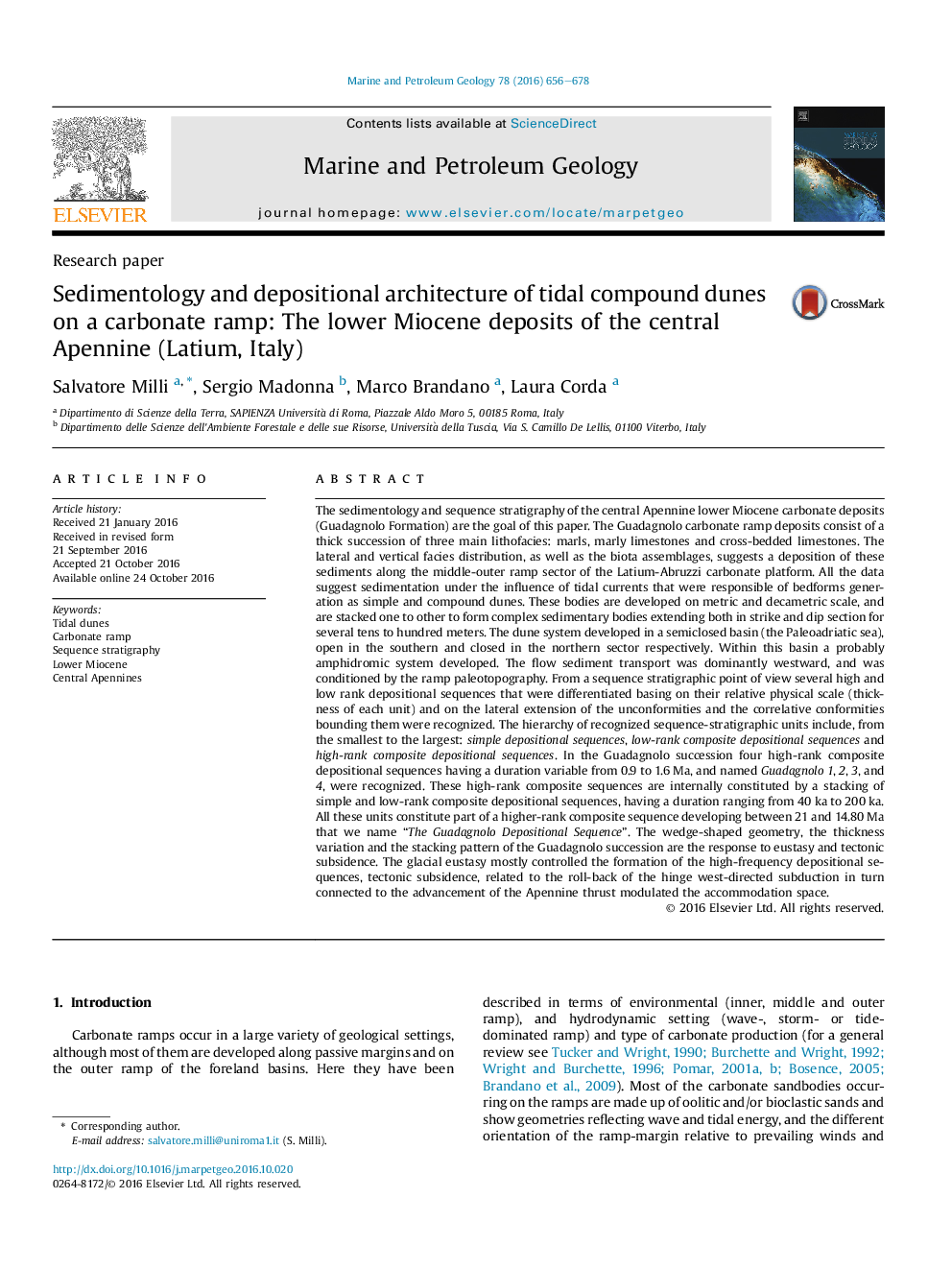| کد مقاله | کد نشریه | سال انتشار | مقاله انگلیسی | نسخه تمام متن |
|---|---|---|---|---|
| 6434424 | 1637149 | 2016 | 23 صفحه PDF | دانلود رایگان |

- This manuscript describes the sedimentology and the sequence stratigraphy of a lower Miocene carbonate ramp in the central Apennines.
- This work highlights how the sedimentation took place under the influence of tidal currents.
- It includes a detailed description of the occurring bedforms, which are represented by simple and compound dunes.
- It shows how the sedimentation occurred in a semiclosed basin where a possible amphidromic point developed.
- iIt shows how the simple and compound dunes are stacked within the recognized low and high rank depositional sequences.
The sedimentology and sequence stratigraphy of the central Apennine lower Miocene carbonate deposits (Guadagnolo Formation) are the goal of this paper. The Guadagnolo carbonate ramp deposits consist of a thick succession of three main lithofacies: marls, marly limestones and cross-bedded limestones. The lateral and vertical facies distribution, as well as the biota assemblages, suggests a deposition of these sediments along the middle-outer ramp sector of the Latium-Abruzzi carbonate platform. All the data suggest sedimentation under the influence of tidal currents that were responsible of bedforms generation as simple and compound dunes. These bodies are developed on metric and decametric scale, and are stacked one to other to form complex sedimentary bodies extending both in strike and dip section for several tens to hundred meters. The dune system developed in a semiclosed basin (the Paleoadriatic sea), open in the southern and closed in the northern sector respectively. Within this basin a probably amphidromic system developed. The flow sediment transport was dominantly westward, and was conditioned by the ramp paleotopography. From a sequence stratigraphic point of view several high and low rank depositional sequences that were differentiated basing on their relative physical scale (thickness of each unit) and on the lateral extension of the unconformities and the correlative conformities bounding them were recognized. The hierarchy of recognized sequence-stratigraphic units include, from the smallest to the largest: simple depositional sequences, low-rank composite depositional sequences and high-rank composite depositional sequences. In the Guadagnolo succession four high-rank composite depositional sequences having a duration variable from 0.9 to 1.6 Ma, and named Guadagnolo 1, 2, 3, and 4, were recognized. These high-rank composite sequences are internally constituted by a stacking of simple and low-rank composite depositional sequences, having a duration ranging from 40 ka to 200 ka. All these units constitute part of a higher-rank composite sequence developing between 21 and 14.80 Ma that we name “The Guadagnolo Depositional Sequence”. The wedge-shaped geometry, the thickness variation and the stacking pattern of the Guadagnolo succession are the response to eustasy and tectonic subsidence. The glacial eustasy mostly controlled the formation of the high-frequency depositional sequences, tectonic subsidence, related to the roll-back of the hinge west-directed subduction in turn connected to the advancement of the Apennine thrust modulated the accommodation space.
Journal: Marine and Petroleum Geology - Volume 78, December 2016, Pages 656-678